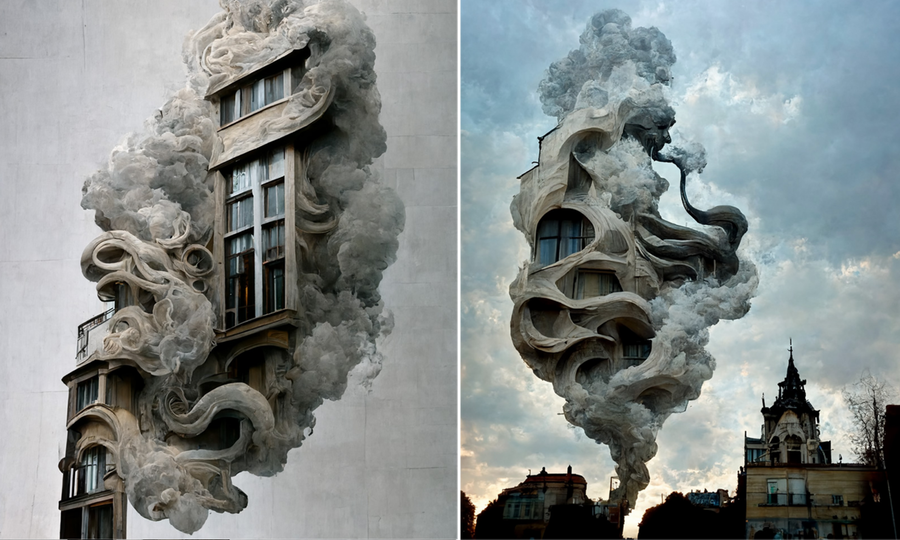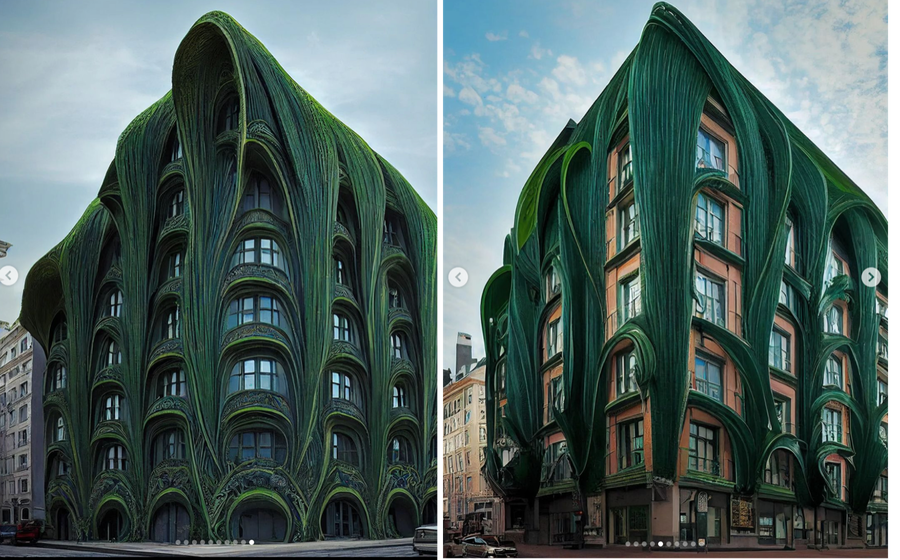A State of Decay: AI-Generated Architecture Envisions Surreal Art Nouveau Structures
It’s hard to be aware of the limitations of human perception when we can’t quite wrap our minds around what else might be out there. For instance, there are animals and insects that perceive the world very differently than we do, navigating with an innate ability to detect the Earth’s magnetic fields and seeing as many as 99 million colors that our eyes can’t detect. Artificial intelligence offers a new way to push past those limitations and preconceived notions about what human creations like architecture should be or look like.

California-based Egyptian artist and architect Hassan Ragab uses the AI art-generating program Midjourney to stimulate his own creativity, and his latest project may be his most surreal yet. “A State of Decay” takes the aesthetics of Art Nouveau architecture and warps them into dreamlike shapes and proportions. While parts of the buildings appear to be solid stone, others look like billowing smoke condensing down into solid, weight-supporting masses. Check out an animated version on Ragab’s Instagram.
The results are eerily beautiful. The characteristic sinuous, sculptural lines and asymmetrical shapes of Art Nouveau are amplified and exaggerated, morphing from the feasibly real to the blatantly unreal. The fact that such structures are not physically possible (at least, not yet) is actually part of the point. If we don’t believe something is possible, we don’t even attempt to work toward it and solve problems that could make it possible along the way.

It’s clear that AI isn’t quite up to the task of designing buildings that are safe, practical, and realistic, and there’s no danger of it replacing architects anytime soon. For artists like Ragab, using AI programs like Midjourney is a way to push their own creative ideas to the next level and introduce elements of surprise. They input text prompts into the program — perhaps something like “Art Nouveau buildings partially consisting of smoke” in this case. That’s the extent of their own control over the results. The AI inserts its own perceptions, resulting in ideas that could actually be feasible as a source of inspiration for wildly creative new architectural forms and materials.

Some users who are new to AI programs like Midjourney might find they’re getting results that are too similar to those of others. Ragab recommends that they get more specific and experimental with their prompts. “Using the right prompts is only one part of the process,” he writes on Instagram. “There are thousands of possibilities that the prompt alone won’t generate. You have to have a process for prompt writing, generating variations, and tweaking your process as you go. And of course not to mention the most important factor (your unique idea).”

In previous projects, Ragab has used AI to help envision conceptual green facades inspired by nature, organic Gothic facades resembling the work of artist H.R. Giger, an interplay of glass walls and red feathers, and many more awe-inspiring images.

“The more I work with Midjourney the more I know there is more to it,” Ragab adds. “As creatives we always have the moment where we stop. Sometimes because we need to, but most of the times we can’t go any further because we are bored, tired, or because it’s time consuming. And therein lies the true power when working with AI. It allows you to make that push, to add something to your limits in the same way [the] plane allowed us to fly. It’s another barrier that we are breaking. And although there are doubts and too many unknowns, I think we will carry on and time will reveal itself to us with even crazier scenarios than the ones we already have about the future.”




